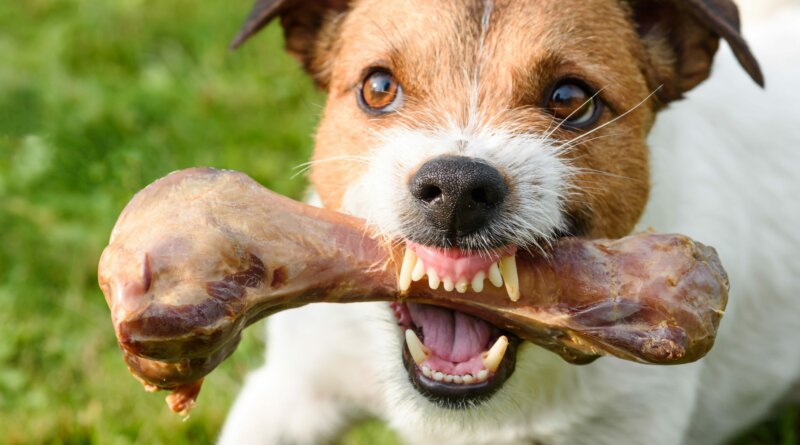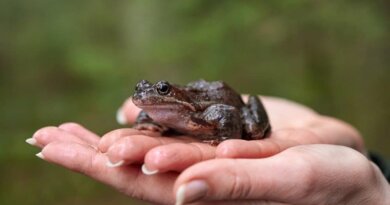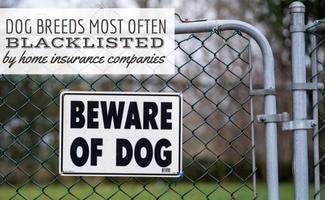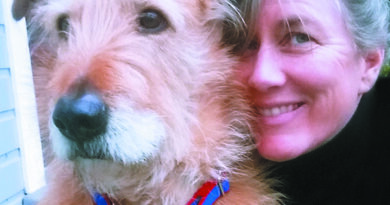Food Aggression And What To Do About It
When a dog shows aggression to protect his food, it can be a serious issue. Not only is there the danger of other dogs or humans in the house being bitten, but over time it can lead to the dog becoming possessive over everything.
What is Food Aggression?
Food aggression is a form of resource guarding in which a dog becomes very defensive when eating, using threats to force others away. It can be directed towards other animals, humans, or both. The behavior can also extend to treats.
There are three degrees of food aggression:
- Mild: the dog growls and may show its teeth.
- Moderate: the dog snaps or lunges when approached.
- Severe: the dog bites.
While it’s easy to assume that all cases of food aggression are a show of dominance, this isn’t necessarily the case. In a dog pack, the alpha dogs always eat first after a successful hunt, and then the other dogs get what’s left according to their pack position.
For an alpha dog, showing food aggression is a form of dominance, but for dogs with a lower pack position, it can be a sign of anxiety or fearfulness. Remember, in the wild, dogs never know where or when their next meal will be, so it’s very instinctual for them to gobble up whatever food there is whenever they have it — and to protect it from anything that approaches.
How to Recognize Food Aggression
When a dog is eating, his body will stiffen and he may keep his head down. He is using his body language to “hover” over the meal and protect it.
Other signs are that the whites of your dog’s eyes may be visible, their ears are held back, their tail is lowered, or their hackles may rise. A dog may show any or all of these signs. Finally, there are the above mentioned signs of the severity of the problem: growling, lunging, or biting.
What To Do About It
The first step is to assess your dog’s overall behavior. Is she only showing possessiveness over food, or does the behavior extend to other things, like favorite toys, resting spots, or even people in the pack?
If the behavior isn’t limited to food, then your dog is showing general resource guarding, so you’ll need to use the techniques listed below as appropriate in all cases where your dog is showing aggression using the target object instead of food.
Also assess your dog’s overall confidence and behavior. If he is naturally a dominant dog, then you will need to assert yourself as the Pack Leader in a calm and assertive way. On the other hand, if he is timid or fearful, you will need to build up his confidence and teach him that his food is safe with humans around.
Finally, determine whether your dog’s food aggression is mild, moderate, or severe. For severe cases, start off by consulting a professional until you can get the dog down to a moderate level.
Once you’ve completed these steps, you’re ready to start changing the behavior. Here are some of the techniques to use.
Be Consistent
If the source of your dog’s aggression is fear or anxiety over when the next meal is coming, then be sure that you are feeding your dog at the same times every single day.
Dogs have a very good internal clock, and with consistency, they quickly learn how to tell when it’s time to get up, time to go for a walk, or time for the people to come home. Mealtime should be no different. Be regular in feeding to take away the anxiety.
Must Work for Food
Before you even begin to prepare your dog’s food, make her sit or lie down and stay, preferably just outside of the room you feed her in. Train her to stay even after you’ve set the bowl down and, once the bowl is down, stand close to it as you release her from the stay and she begins eating, at which point you can then move away.
Always feed your dog after the walk, never before. This fulfills his instinct to hunt for food, so he’ll feel like he’s earned it when you come home. Also, exercising a dog after he eats can be dangerous, even leading to life-threatening conditions like bloat.
Pack Leaders Eat First
Remember, when a wild pack has a successful hunt, the alpha dogs eat first, before everyone else, and it should be no different in a human/dog pack.
Never feed your dog before or while the humans are eating. Humans eat first and then, when they’re finished, the dogs eat. This will reinforce your status as the Pack Leader.
“Win” the Bowl
Food aggression can actually be made worse if you back away from the bowl, because that’s what your dog wants. For every time that you do walk away when the dog is showing food aggression, the dog “wins.” The reward is the food and this just reinforces the aggression.
Of course, you don’t want to come in aggressively yourself, especially with moderate to severe food aggression, because that is a good way to get bitten. However, you can recondition the dog until she learns that she wins when she lets you come near her while eating.
Here are some of the techniques you can use:
- Hand feeding: Start your dog’s meal by giving him food by hand, and use your hands to put the food in the bowl, which will give it your scent. The goal is to get your dog used to eating while your hands are around his face, and to have no aggressive reaction if you stick your hands in or near the bowl while he’s eating.
- Treat tossing: Drop your dog’s favorite treats into the bowl while she’s eating so she’ll learn that people approaching the bowl is a good thing and not a threat. You can also put treats into the bowl when you walk near it and she’s not eating. This reinforces the connection in your dog’s mind that people near her bowl is good.
- “Trade-Up”: When your dog is eating their regular food, approach them with something better, like meat or a special treat. The goal here is to get your dog to stop eating their food to take the treat from you. This teaches your dog several things. One is that no one is going to steal his food if he looks away from it. The other is that removing his attention from his food when people come around leads to a reward.
What’s Going On?
In rehabilitating a food aggressive dog, two things are happening. One is that you’re desensitizing your dog so that she will no longer become protective when anybody approaches her while she’s eating. The other is that you’re counterconditioning your dog by teaching her to associate people approaching her bowl with good things.
There are many other techniques you can use to reduce food aggression or to prevent it from happening in the first place. The key, as always, is to be calm, assertive, and consistent.
The term “food aggression” can be misleading because people can easily interpret it as dominance, and it really is better to think of it as resource guarding. As humans, we need to establish our place as Pack Leader, and teach our dogs that there’s no reason to guard their food from us.
Have you established a feeding ritual for your dog?





can you buy zithromax over the counter in canada https://azithromycin.bar/ buy zithromax without prescription online